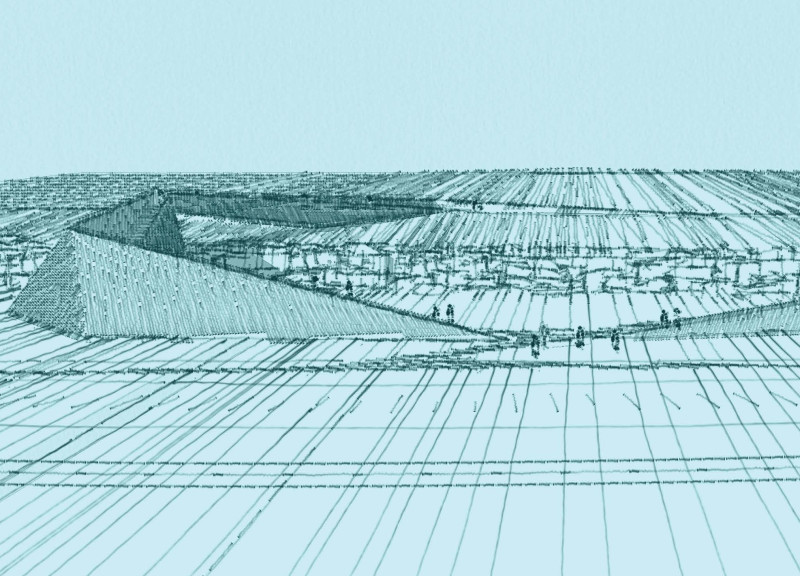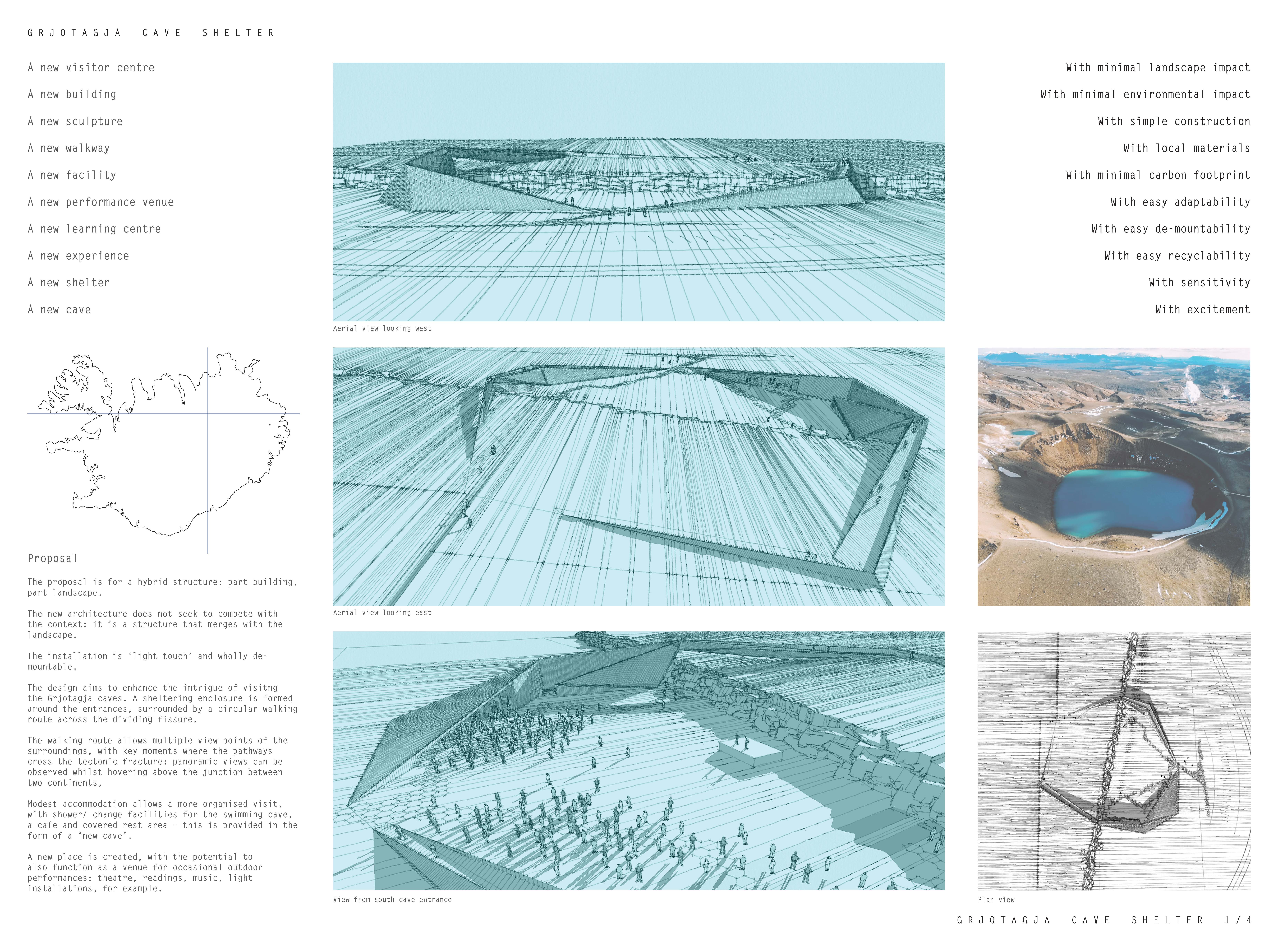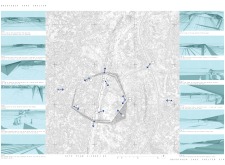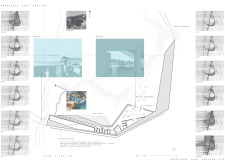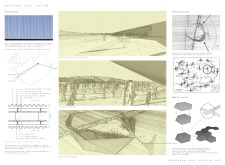5 key facts about this project
The Grjotagja Cave Shelter is set in Iceland's distinctive geological landscape, located near the Grjotagja caves along the Mid-Atlantic Ridge. It serves to enhance visitor interaction with this remarkable site while providing modern amenities. The design merges built space with the surrounding environment, achieving a balance that respects both the natural beauty and the visitor experience.
Design Concept
The primary idea behind the design is a hybrid structure that blends with the landscape. A circular walking path runs around the shelter, allowing visitors to explore the area and observe the unique geological features of the caves. This route not only facilitates movement but also presents various viewpoints, enriching the experience of the site's topography and formations.
Architectural Features
Essential amenities are included in the design to serve visitors effectively. Shower and changing facilities are available for those wanting to enjoy the swimming cave, as well as a café for refreshments. The shelter also features a covered rest area designed to resemble a 'new cave,' enhancing the overall experience. This integration of facilities supports an organized visit while inviting engagement with the natural surroundings.
Sustainability and Materials
The project focuses on minimizing environmental impact. It utilizes local materials to help reduce the carbon footprint associated with construction. Aluminium is specified for the external walls and structural components due to its durability and resistance to corrosion. This choice not only enhances the structure’s longevity but also requires less maintenance over time, ensuring a good fit within the natural landscape.
Energy Efficiency
An energy center is part of the design, supporting environmentally friendly practices. Off-grid energy sources, such as solar panels and geothermal heating, contribute to the sustainability of the facility. This focus on energy efficiency reflects a commitment to creating a space that works well with its environment while meeting the needs of its users.
The design creates a protective enclosure around the cave entrances, encouraging exploration and appreciation of the geological wonders nearby. Natural light filters through the structure, creating changing patterns of light and shadow that draw attention to the beauty of the surrounding landscape.


